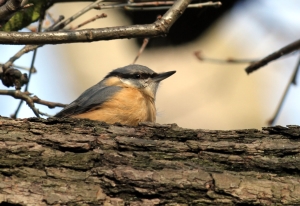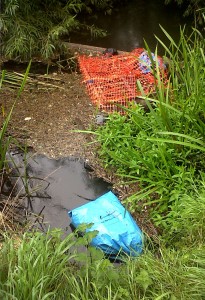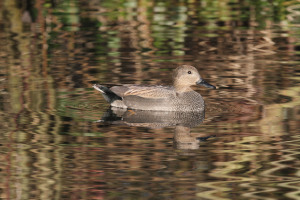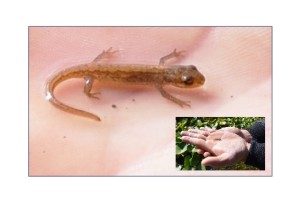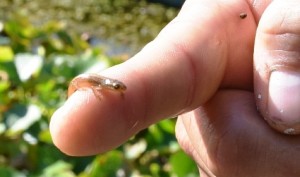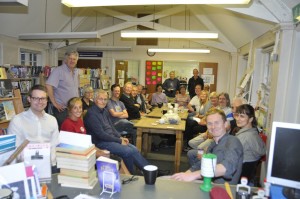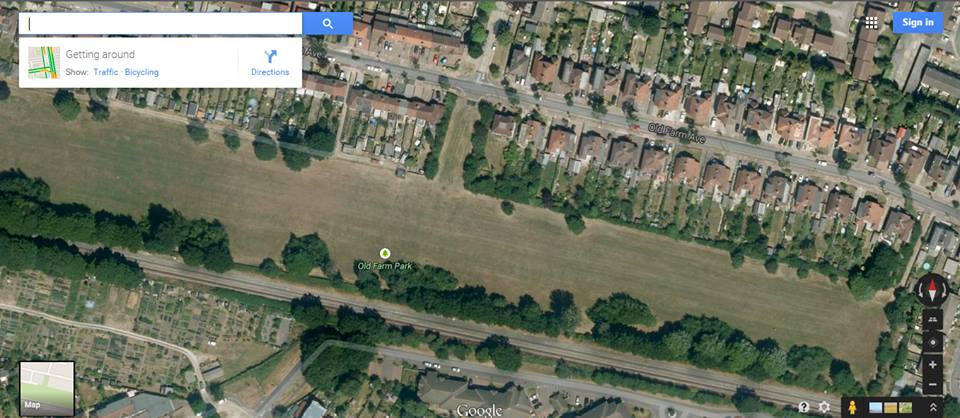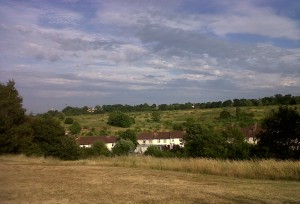Avocet the highlight as rain gives way to sun on Bexley RSPB Crayford marshes visit.
It was raining hard at 8am, raining at 9am, cloudy 10am and brilliant warm sunshine 11am – surprisingly 6 members arrived to join us for the early autumn walk around Crayford Marshes from Moat Lane to the River Thames.
We wandered past Howbury Moat and surrounding meadows also taking in the landfill site – very little bird activity apart from the constant call of ring-necked parakeets. However we soon noticed a slow but almost constant movement of swallows and house martins, a good opportunity to compare like with like on the wing. Alas, no luck with the little owl in the willows, we would try again on the return walk.
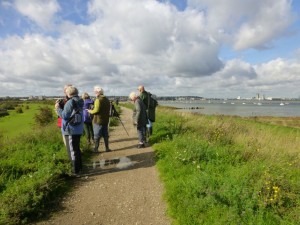
Bexley RSPB Group members on the sea wall at Crayford Marshes (Photo: Brenda Todd)
Once onto the river wall overlooking the River Darent, Crayford and Dartford marshes – a fabulous 360 degree view with more hirundines moving. The odd small birds flitted amongst the dense scrub, blackbird, dunnock, robin, blackcap, collared doves and a Cetti’s warbler calling. We arrived just as the high tide turned so little to see as we walked down river, one bush held 4 reed buntings but even they disappeared under our gaze. A kestrel hunted and a grey heron rested.
By the time we reached Crayfordness (where the Darent meets the Thames) there was enough mud exposed to show a gathering of black-headed gulls, single great and lesser black-backed gulls – close enough for good comparison. On the Dartford side there were a couple of dunlin hiding amongst around 40 redshank, 7 black-tailed godwit and a single avocet all showing in good light. Avocet is not a common visitor to the Thames this far up but the odd one is being seen fairly regularly during autumn/winter. Another species being seen more frequently and probably the highlight of the walk and not a bird were the two common seals hauled out on the tide-line. We continued our walk almost reaching Erith Yacht Club before time decreed we must return. Seal numbers had doubled by the time we reached the Ness again and we noticed that they must have been resting up against the bank as we could clearly see their trails where they had slithered their way down to the tideline.
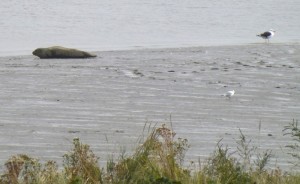
Common Seal and Great black-backed Gull, Crayford Marshes (Photo: Ralph Todd)
Our return walk produced a few teal, mallard, a common sandpiper flying away and two little egrets as we searched once more in vain for the little owl.
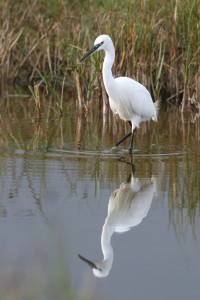
Little Egret (Photo: Ralph Todd)
All in all an enjoyable three hour walk if a little light on species but we were extremely grateful to remain dry throughout.
Species seen:- Cormorant, little egret, grey heron, mallard, teal, kestrel, black-headed gull, herring gull, great black-backed and lesser black-backed gull, black-tailed godwits, avocet, redshank, dunlin, common sandpiper, wood pigeon, collared dove, ring-necked parakeet, swallow, house martin, dunnock, robin, blackbird, blackcap, chiffchaff, Cetti’s warbler, blue tit, magpie, carrion crow, starling, reed bunting, house sparrow. Four Common Seals.
Ralph Todd

